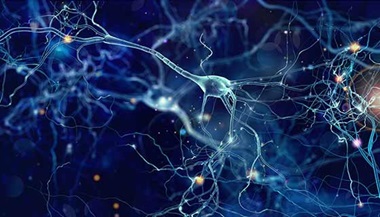Vestibular Migraine
Migraine headaches are a common neurological condition. Although common migraines are characterized by a moderate to severe pounding or throbbing headache, vestibular migraine may or may not involve headaches in combination with vestibular symptoms such as vertigo, imbalance, nausea and vomiting.
What You Need to Know
- Vestibular migraine can cause vestibular or balance symptoms with or without an actual headache.
- There is almost always a history of motion sensitivity (such as car sickness) since childhood, and migraine headaches at some point in the person's lifetime, even if they last occurred decades ago.
- Vestibular migraine isn’t fully understood but seems to result from overlapping pathways that modulate pain and vestibular inputs into the brain.
- Many of the triggers for migraine headaches can cause a vestibular migraine.
Vestibular Migraine Symptoms
-
Vestibular migraines can involve combinations of the following symptoms:
-
Migraine headache symptoms, such as
-
Severe, throbbing headache, usually on one side of the head
-
Nausea and vomiting
-
Sensitivity to light, smell and noise
-
-
Vestibular symptoms may include:
-
Vertigo (dizziness), usually lasting minutes to hours, but sometimes days
-
Unsteadiness and loss of balance
-
Sensitivity to motion
-
Although subjective hearing symptoms (ringing, fullness, pressure in one or both ears) are common, significant hearing loss should raise suspicion for an inner ear disorder such as Méniére’s disease.
With a vestibular migraine, the person may experience a combination of vestibular attacks, visual aura, or sensitivity to visual stimulation and motion at different times, and they can occur with or without an actual headache.
What causes vestibular migraine?
Vestibular migraines, like other migraine syndromes, tend to run in families. Although science has not completely clarified the complex mechanisms of migraine, it is known that women tend to suffer more from the condition than men, and symptoms may get worse around menstruation.
In addition, people vulnerable to vestibular migraines can experience episodes after migraine triggers including altered sleep patterns, MSG, menstrual cycle and food such as chocolate, ripened or aged cheese and red wine.
Vestibular Migraine Diagnosis
Because a majority of people who have vestibular migraine do not have vestibular symptoms and headaches occurring at the same time, the onset of dizziness by itself may make it challenging to arrive at a diagnosis. Other diagnostic considerations that can present similarly to vestibular migraine include:
It is common for vestibular migraine, Méniére’s disease and BPPV to coexist, which can make diagnosis and treatment even more challenging.
Vestibular Migraine Treatment
Treatment for vestibular migraine is similar to that for other migraine headaches. Use of meclizine or other abortive medications that suppress the vestibular system should be minimized, and only used occasionally as needed, during an episode for instance.
If the person is getting frequent attacks, the doctor may recommend one or more of these medications, as well as others:
-
Beta-blockers
-
Calcium channel blockers
-
Tricyclic antidepressants
-
Serotonin or serotonin/norepinephrine reuptake inhibitors (SSRIs or SNRIs)
-
Topiramate
People with vestibular migraines can reduce the number and intensity of episodes by maintaining a regular sleep and meal schedule, avoiding triggers, exercising regularly and managing stress.










